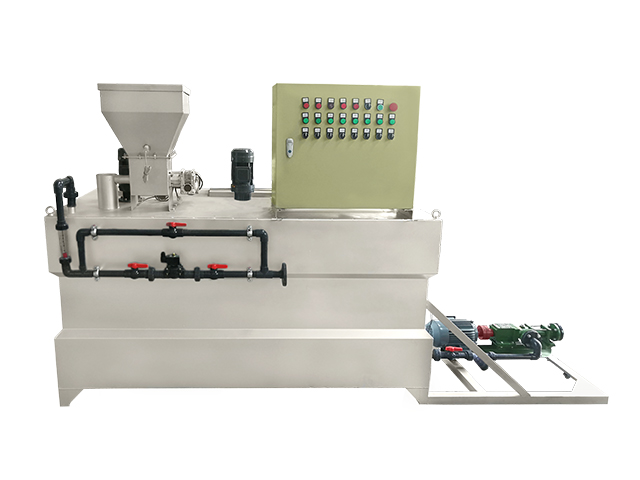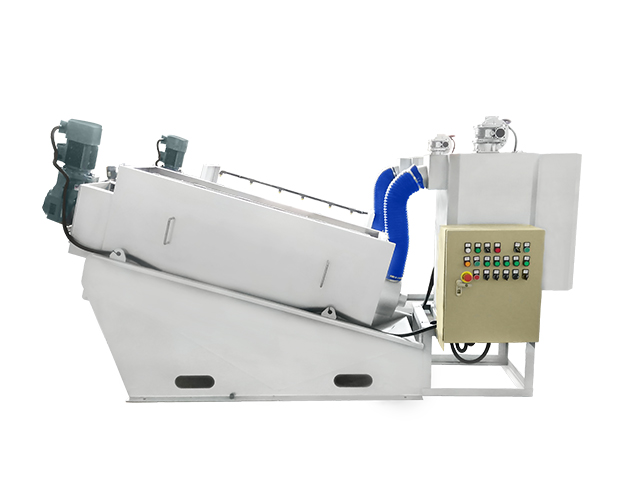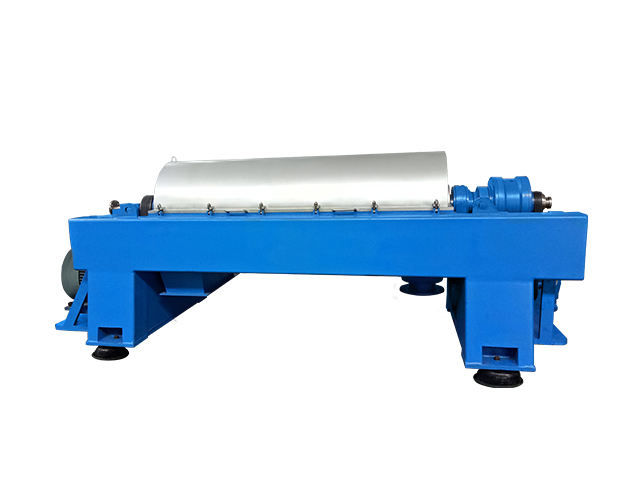
Details of sludge treatment
Industry News
Sludge treatment refers to the ultimate disposal of sludge after reducing water content or removing organic impurities and killing pathogens. In addition to the comprehensive utilization meeting the sanitary conditions, the sludge or waste residue must be ultimately disposed.
1. Types of sludge
Sludge is a kind of heterogeneous substance composed of organic debris, bacteria, inorganic particles and colloids. It is difficult to realize complete solid-liquid separation by sedimentation. Sewage treatment sludge is a typical organic sludge, which is characterized by high organic content (60%-80%), fine particles (0.02-0.2mm), small density (1002-1006kg/m³), and colloidal structure. It is a kind of hydrophilic sludge, easy to be transported by pipeline, but with poor dewatering performance.
With the decrease of water content, the sludge changes from pure liquid to viscous, plastic, semi dry solid until pure solid. Generally, the water content can be reduced to 85% by concentration. When the water content is 70%-75%, the sludge is soft and not easy to flow. In general, the water content can only be reduced to 60%-65% by dewatering machine, at this time, the sludge is almost solid. When the water content is as low as 35%-40%, the sludge is in the state of aggregation and dispersion (semi dry). When the water content is further reduced to 10%-15%, the sludge becomes powdery.
1.1 According to the sewage treatment methods or the process of sludge separation, the sludge can be divided into four categories:
(1) Primary sludge: sediments discharged from primary sedimentation tank.
(2) Residual sludge (residual activated sludge): due to the metabolism and biosynthesis of microorganisms, the biomass of activated sludge in the aeration tank is increased. Part of the sludge settled in the secondary sedimentation tank flows back to the aeration tank for reprocessing, and the excess discharged is the residual sludge.
(3) Humus sludge: it refers to the sediments produced by the secondary sedimentation tank in the sewage treatment process of the biofilm process (such as the biological filter, biological rotary table, partial biological contact oxidation tank, etc.).
(4) Chemical sludge: sludge produced by the chemical methods such as coagulation and chemical precipitation.
1.2 According to the different stages of sludge production, sludge can be divided into five categories:
(1) Raw sludge (fresh sludge): the sediments or suspended solids separated from the sedimentation tank, without any disposal.
(2) Digested sludge (mature sludge): the sludge after anaerobic or aerobic digestion.
(3) Concentrated sludge: the sludge after concentrating.
(4) Dewatered sludge: the sludge after dewatering.
(5) Dry sludge: the sludge after drying.
2. Characteristics of sludge
According to its source, the sludge can be roughly divided into municipal sewage sludge and industrial sewage sludge.
Compared with municipal sewage sludge, industrial sewage sludge is more difficult to be disposed because of its high viscosity, high oil content and high proportion of inorganic substances.
3. Technical means and comprehensive utilization of sludge treatment
3.1 Anaerobic digestion
Anaerobic digestion is the process of sludge stabilization by decomposing the biodegradable organic substances into carbon dioxide, methane and water through facultative bacteria and anaerobic bacteria in anaerobic environment. At present, anaerobic digestion is one of the common means of sludge reduction and stabilization. Compared with aerobic digestion, it has the advantages of low cost (no need of blowing equipment, deodorization equipment), less emission of noxious gas , gas recovery and utilization.
According to the different treatment temperature, anaerobic digestion can be divided into medium temperature digestion and high temperature digestion. Compared with medium temperature digestion, high temperature digestion has the advantages of higher gas production rate and smaller digester volume, but it requires higher energy consumption, so at present, the medium temperature digestion is widely used in China. Anaerobic digestion involves four stages: hydrolysis, acidification (fermentation), acetification and methanation. Each stage is interrelated and influenced by each other, and each stage has its own characteristic microbial community.
Anaerobic digestion has the following advantages:
(1) Improve the efficiency of post treatment and reduce the energy consumption of post treatment. It is generally recognized that anaerobic reaction can realize the reduction and stabilization of the sludge. After anaerobic reaction, 40%-60% of organic substances in the sludge are removed, and the harmful bacterias are reduced. In addition, anaerobic digestion can improve the stability of sludge dewatering, and reduce the energy consumption of incineration and other post treatments by more than 35%.
(2) Low anaerobic digestion cost. The investment cost of anaerobic digestion is about 200000-400000 yuan/ton/day. Because it dose not need air blowing and aeration, the cost is saved. The operation cost of anaerobic digestion is about 60-120 yuan/ton (water content 80%, excluding concentration and dehydration), while the operation cost of aerobic fermentation is 120-160 yuan/ton.
3.2 Sludge drying
According to the different treatment process, sludge drying can be divided into direct drying and indirect drying. Direct drying is the direct introduction of high-temperature flue gas into the dryer, and heat transfer is carried out by contact convection between gas and wet materials. Because direct drying will increase the pollution gas, its sludge treatment capacity is small, and has are some security risks, European countries have gradually abandoned direct drying, and adopted indirect drying.
Indirect drying is to transfer the heat of high-temperature flue gas to steam through a heat exchanger. The steam circulates in a closed loop without contact with sludge. There is a certain heat loss in indirect drying, but the amount of flue gas to be treated is small, and will not produce secondary pollution.
At present, the main sludge drying equipment are: three-way rotary cylinder dryer (drum dryer), fluidized bed dryer, paddle dryer, disc dryer, belt dryer, etc.
3.3 Sanitary landfill
The sanitary landfill of sludge began in the 1960s. It is a scientific engineering operation method with strict management system after scientific site selection and necessary site protection treatment. Up to now, it has became a relatively mature sludge disposal technology. After aseptic treatment, the sludge can be dumped directly into low-lying areas to create artificial land.
Advantages:
Low treatment cost, no need of high dehydration or natural drying, less investment, large capacity and quick results.
Disadvantages:
(1) Various toxic and harmful substances contained in the sludge will pollute the groundwater and atmosphere after rainwater erosion and infiltration. The area suitable for sludge landfill is becoming more and more limited due to the large output of municipal sludge. When sanitary landfill is used, it is necessary to pay attention to the geological, hydrological and soil conditions.
(2) Environment sanitation should be taken into consideration. The pit should be paved with materials with good impermeability, and the landfill should be equipped with leachate collection devices and purification facilities. At present, high density polyethylene is used as impermeable layer in the sanitary landfill in China to avoid the secondary pollution of groundwater and soil.
(3) The high cost of long-distance transportation is an important factor restricting the sanitary landfill of sludge.
3.4 Sludge incineration
Sludge incineration is a kind of high-temperature heat treatment technology. A certain amount of excess air and treated organic waste are oxidized and decomposed in the incinerator, thus the toxic and harmful substances in the waste are destroyed.
Sludge incineration can realize the harmless, reduction (70% capacity reduction, up to 90%) and resource utilization of sludge. The main purpose of sludge incineration is to incinerate the waste as much as possible, turn the incinerated substances into harmless and maximally reduce the volume, so as to minimize the generation of new pollutants and avoid secondary pollution. In recent years, due to the adoption of appropriate pretreatment process and incineration method, the incinerated sludge can meet the increasing stringent environmental requirements. Sludge incineration is considered to be the most thorough, fast and economic method of sludge disposal.
According to the different incineration methods, sludge incineration can be divided into direct incineration and dry incineration. Direct incineration refers to the incineration of high-temperature sludge (water content over 85%) directly in incinerator with auxiliary fuels as the heat source. Due to the high water content and low calorific value, a large amount of auxiliary fuels are needed to be consumed, and after incineration, there will be a lot of exhaust gas. The subsequent tail gas treatment requires other equipment, so the investment cost it high.
Direct incineration is gradually replaced by dry incineration in terms of operation cost and equipment investment. Dry incineration is to incinerate the sludge after drying treatment. The current dry incineration includes separate incineration, collaborative disposal of thermal power plants, collaborative disposal of cement kilns.
3.5 Aerobic composting (fermentation) -- formation of Biofertilizer
Aerobic composting is a process in which sludge is transformed into fertilizers by microbial fermentation under aerobic conditions. Organic materials are metabolized into carbon dioxide, water and heat.
Advantages:
(1) High fermentation efficiency and short stabilization time.
(2) Less odor, bacteria killing.
(3) Water content can be reduced to 40%.
(4) Sludge products are mainly used to repair saline alkali land, municipal greening, landfill coverage and construction.
(5) Earthworm bio composting is derived to enhance the composting effect.
Disadvantages:
(1) Ventilation energy consumption accounts for 80%.
(2) It is necessary to strengthen the research on the reasonable ventilation in different stages of aerobic composting operation.
(3) Lack of theoretical research on control factors such as C/N, resulting in the excessive use of conditioning additives.
3.6 Carbonization
Carbonization is as follows: heating the sludge, cracking the microbial cells in the sludge, releasing the water in the sludge, and retaining the carbon in the sludge as much as possible. Carbonization process has the following characteristics:
(1) High temperature. Under the action of high temperature, some organic substances are depolymerized to form combustible gas.
(2) Low oxygen. In the process of high temperature treatment, limited combustion can be realized by limiting oxygen supply.
(3) Low water content. Waste (such as sludge) should be reduced the water content (pre-drying) before pyrolysis.
Compared with thermal drying and incineration, the advantages of carbonization are as follows:
(1) Low energy consumption.
(2) High carbon content in the remaining products.
(3) High calorific value and great utilization of carbon.
3.7 Building materials and land utilization
Building materials utilization refers to the disposal of sludge as part of raw materials for building materials, applied to the production of brick, cement, ceramsite, activated carbon, fused light materials and biochemical fiber board.
Land utilization is a kind of positive and sustainable sludge final disposal mode. After properly treated to meet certain standards, the sludge or its products will be used as fertilizers or soil improvement materials for farmland use , landscape use or land improvement.
Land utilization has achieved good results in developed countries, mainly in close connection with agriculture. In China, land utilization is not widely used. Due to the long-term mixed treatment of industrial sewage and domestic sewage, considering the risk of heavy metals in the sludge, the “organic fertilizers” made of sludge are forbidden to be used in agriculture, they can only be used as greening soil, landfill soil, subgrade soil, etc.
3.8 Sludge soil-conversion
Sludge soil-conversion has developed rapidly in Europe in recent years, and has been widely used in Germany, Switzerland, the United States and other countries. The sludge is converted into a top-grade humic soil (natural compost) after the corrosion of plants, and recycled to the nature again. At the same time, there are no harmful substances such as heavy metals in the compost, so it is very suitable for composting or land improvement.
Advantages:
(1) Reusable, low reinvestment cost, very low operating cost, prevention of secondary pollution, simple process, independent of skilled technicians.
(2) The sludge is rich in nitrogen, phosphorus and other fertilizer elements. Sludge soil-conversion can reduce the use of fertilizers, and is conducive to crop cultivation. It is a technology integrating sludge stability and soil protection.
(3) The sludge can be converted into high-quality humus which are suitable for composting or soil improvement.
(4) The filling pits are paved with materials with good impermeability and high density polyethylene is used as the impermeable layer to avoid the secondary pollution of groundwater and soil.
(5) Sludge soil-conversion can avoid the soil damage caused by heavy metals and pathogens.
(6) Suitable for the treatment of sludge with high water content.
Disadvantages:
(1) It is not suitable to be used in cities because of its large covering area. It is mainly used in areas with sufficient supply.
(2) The high cost of long-distance transportation is an important factor restricting the use of sludge soil-conversion.


